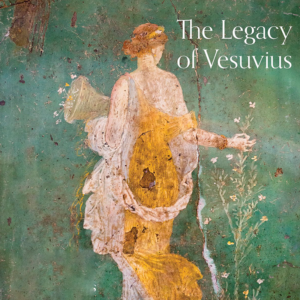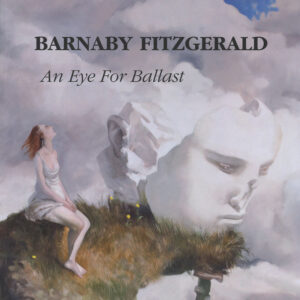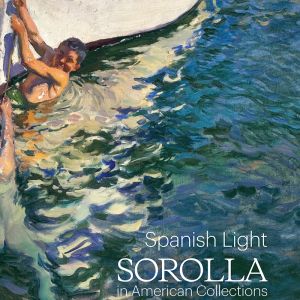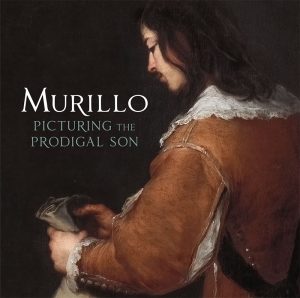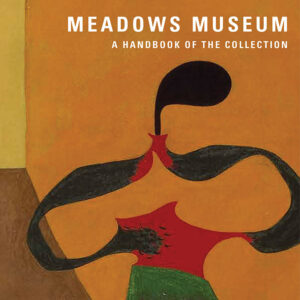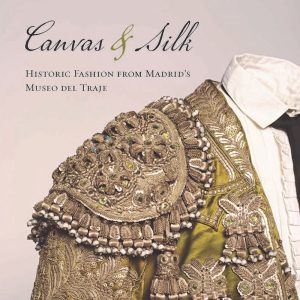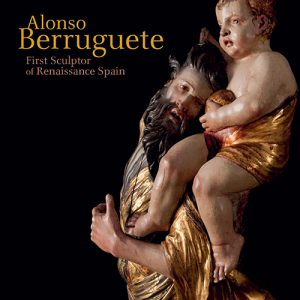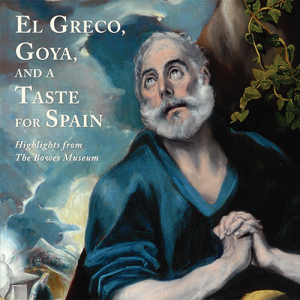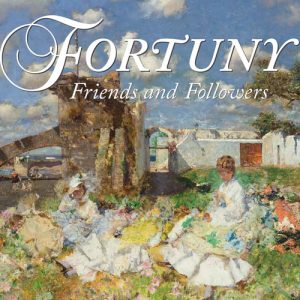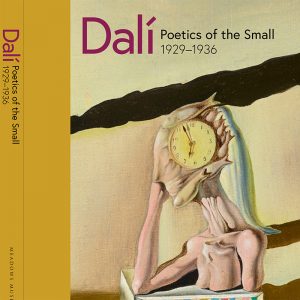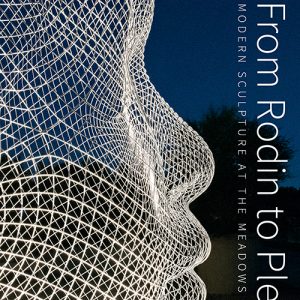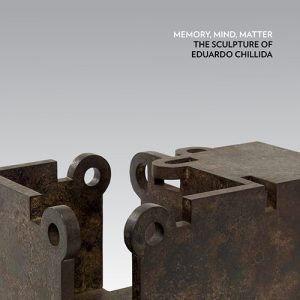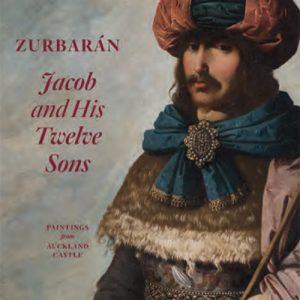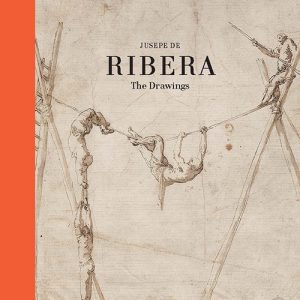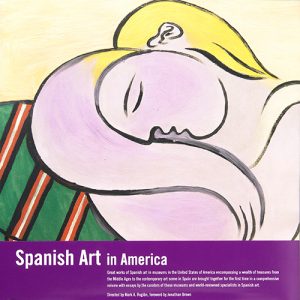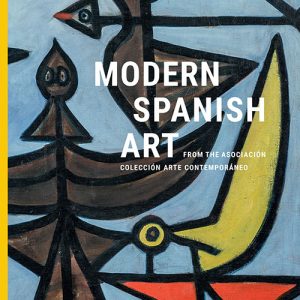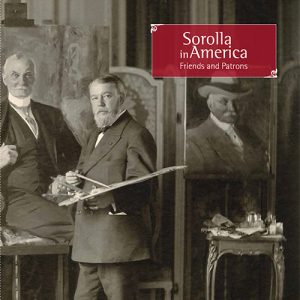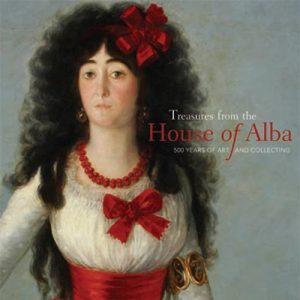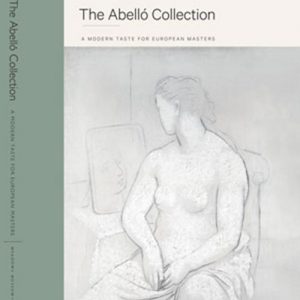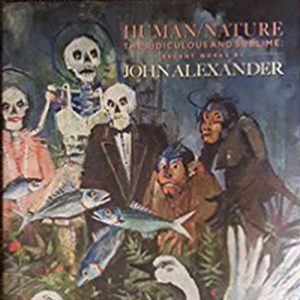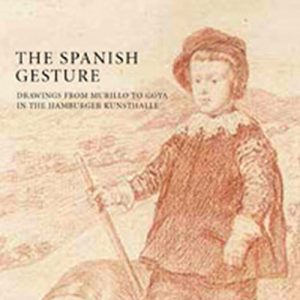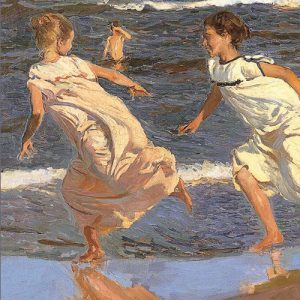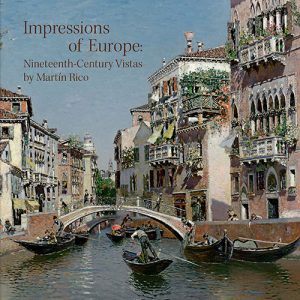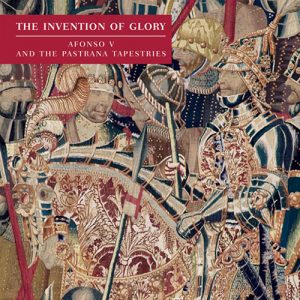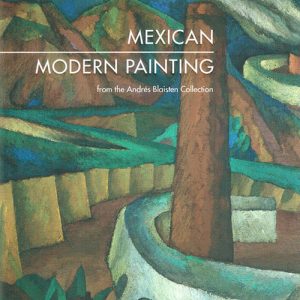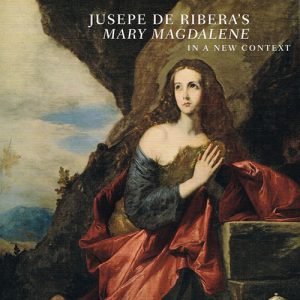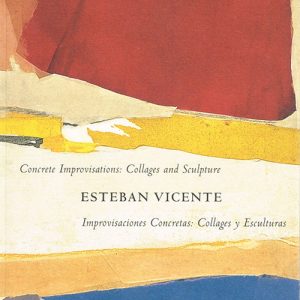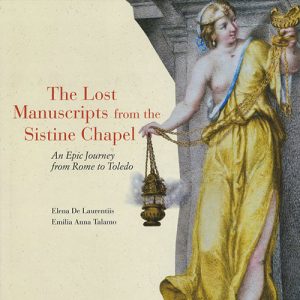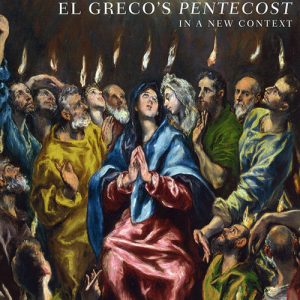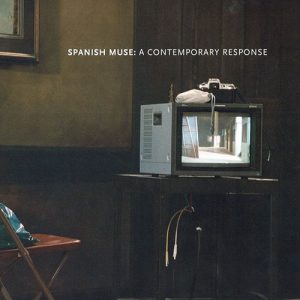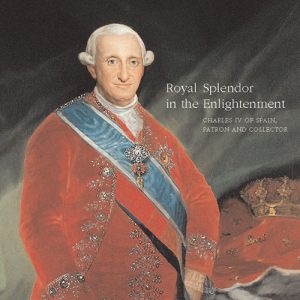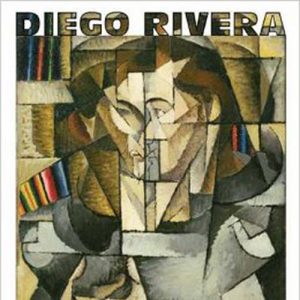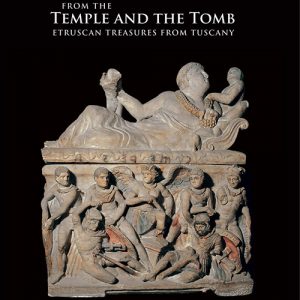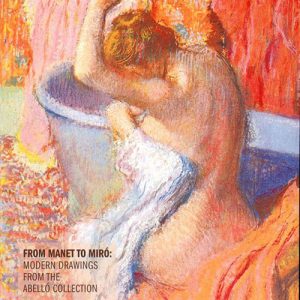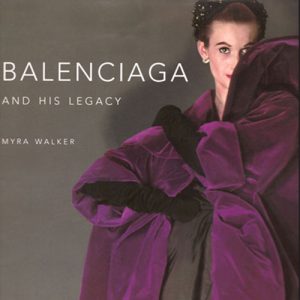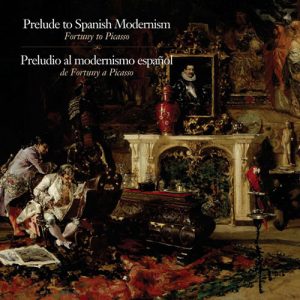The Meadows Museum Shop is your destination for unique gifts, unusual jewelry and fabulous books. A great place to browse, you will see a wide range of merchandise and an incredible selection of books that complement the Museum’s permanent collection and expand your knowledge of our visiting exhibitions. Our children’s section is rich with exciting toys, art sets and hard-to-find books. Meadows Museum members receive a 10% discount on all purchases and from time to time also get special offers and opportunities.
The following museum publications are available in the Meadows Museum Shop. Purchase by contacting the shop directly at either 214.768.1695 or museumshop@smu.edu. Books with a “Buy Catalogue” button can also be purchased online via Amazon. If ordering catalogues via e-mail, please be sure to include the title(s) in your message but DO NOT include credit card information, a shop representative will call you to obtain it.
“There were many exhibition catalogues that piqued my interest this year, though I always especially enjoy those from the Meadows Museum. They showcase some of the most in-depth historical research out of any exhibition program in the state.”
– William Sarradet, Glasstire
The Legacy of Vesuvius: Bourbon Discoveries on the Bay of Naples
Details
The book features a unique combination of classical archaeological finds and the art they influenced in the Spanish Bourbon Court in Naples, Italy, during the eighteenth century. It also includes sculptures and frescoes from the Villa of the Papyri at Herculaneum, material culture from the Temple of Isis at Pompeii, and works from eighteenth-century artists including Angelica Kauffman, Anton Rafael Mengs and Antonio Joli.
Editor: Michael L. Thomas
Hardcover, 192 pages
$65
Barnaby Fitzgerald: An Eye For Ballast
Details
Valley House Gallery, the gallery of record representing Barnaby Fitzgerald, has produced this thoughtful publication in celebration of the artist’s 2024 exhibition at the Meadows Museum and his retirement from SMU in 2023 as professor emeritus of art. It features not only an essay and catalogue entries by the artist himself, but also a foreword by Meadows Museum director Amanda W. Dotseth and essays by Frederick Turner, Professor Emeritus of Literature and Creative Writing at the University of Texas at Dallas, and artist Roger Winter, Fitzgerald’s friend and former SMU colleague.
Design: Kevin Vogel
Softcover, 72 pages
$30
Spanish Light: Sorolla in American Collections
Details
Spanish Light: Sorolla in American Collections is an opportunity to gather and present images of these privately held works even after the close of its eponymous exhibition. It features an introduction and chronology by editor and exhibition curator Blanca Pons-Sorolla, a preeminent scholar of Sorolla’s work and the artist’s great-granddaughter. Art historian Cristina Domenech has also contributed an essay that offers perspectives on the artist’s popularity among American private collectors past and present, and explores the collecting history of the featured works. The research for this publication is based in part on that conducted for museum’s groundbreaking 2013–14 exhibition Sorolla and America, which was also curated by Pons-Sorolla, and in which Cristina Domenech also contributed an essay.
Editor: Blanca Pons-Sorolla
Contributor: Cristina Domenech
Softcover, 88 pages
$30
Creating the Museum of Spanish Abstract Art
Details
During the mid-twentieth century, Spanish abstract artists experienced success abroad yet struggled for recognition at home. In 1966, in an effort to promote Spanish abstraction within Spain, the artist and collector Fernando Zobel (1924-1984) established the Museo de Arte Abstracto Español. He housed his modern collection within the historic Hanging Houses of Cuenca, a town southeast of Madrid that soon became a haven for Spanish artists. Zobel’s museum was the first institution in Spain dedicated exclusively to abstract art as well as the country’s first artists’ museum. The scholarly essays in this richly illustrated volume elucidate the history of this pioneering museum against the cultural and political backdrop of the last decade of the Franco dictatorship. Forty-two outstanding paintings and sculptures by artists such as Eduardo Chillida, Antonio Saura, and Antoni Tapies are reproduced in the catalogue section, accompanied by essays that situate each artwork within the context of the artist’s career. In the Shadow of Dictatorship: Creating the Museum of Spanish Abstract Art represents one of the first major publications in English dedicated to midcentury Spanish abstract art.
Editors: Clarisse Fava-Piz & Amanda W. Dotseth
Contributors: Paula Barreiro Lopez, Clarisse Fava-Piz, Manuel Fontan del Junco, Miranda Saylor, Olivia Turner, Anna Wieck
$65
Masterpiece in Residence: Velazquez
Details
The latest volume of the Masterpiece in Residence series highlights Diego Velazquez’s portrait King Philip IV of Spain (1644), know colloquially as the Fraga Philip, on loan from The Frick Collection. Celebrating masterpieces of Spanish art in the United States collections, each book in this series focuses on a single work of art on the occasion of its exhibition at the Meadows Museum in Dallas, Texas.
Editors: Amanda W. Dotseth
Essay: Giles Knox
48 pages
$14.95
Murillo: Picturing the Prodigal Son
Details
visualizing narrative; each painting’s composition is independently representative but also cues sequential reading and the collective experience of the series as a whole.
159 pages
$45
Meadows Museum: A Handbook of the Collection
Details
Meadows Museum: A Handbook of the Collection
Edited by Mark A. Roglán
The guide features over 200 newly written object entries, 235 color illustrations, and references a total of more than 400 individual objects or series of works. Edited by the museum’s director, Mark A. Roglán, the volume contains the contributions of 14 individual authors, many of them alumni of the museum’s pre- or postdoctoral fellowship program who now serve in curatorial and academic positions in the U.S. and Europe, as well as current and former staff from the museum’s curatorial and education departments.
Canvas & Silk: Historic Fashion from Madrid’s Museo del Traje,
Details
Description: Envisioned in the style of a fashion magazine, this catalog accompanies the exhibition Canvas & Silk: Historic Fashion from Madrid’s Museo del Traje, on display at the Meadows Museum, SMU, Dallas, from September 19, 2021– January 9, 2022. The exhibition pairs iconic styles of historic, Spanish dress on loan from Spain’s National Museum for Fashion with masterpieces of Spanish art from the Meadows Museum collection. Displayed together, the works not only tell the story of how fashion trends in Spain changed over five hundred years, but also reveal how elements of a country’s history—such as its involvement with global trade or the formation of a national identity – are reflected in its dress. Illustrated with newly commissioned photography by contemporary Spanish photographer Jesus Madrinan this publication allows readers to experience the exquisite detailing of the garments close–up, including handmade lace,
embroidery, and beading.
Authors: Amanda W. Dotseth, Elvira Gonzalez Asenjo
91 pages
$40
Alonso Berruguete: First Sculptor of Renaissance Spain
Details
Alonso Berruguete: First Sculptor of Renaissance Spain, by C. D. Dickerson III (Author), et al.
Alonso Berruguete (c. 1488–1561) revolutionized the arts of Renaissance Spain with a dramatic style of sculpture that reflected the decade or more he had spent in Italy while young. Trained as a painter, he traveled to Italy around 1506, where he interacted with Michelangelo and other leading artists. In 1518, he returned to Spain and was appointed court painter to the new king, Charles I. Eventually, he made his way to Valladolid, where he shifted his focus to sculpture, opening a large workshop that produced breathtaking multistory altarpieces (retablos) decorated with sculptures in painted wood. This handsomely illustrated catalogue is the first in English to treat Berruguete’s art and career comprehensively. It follows his career from his beginnings in Castile to his final years in Toledo, where he produced his last great work, the marble tomb of Cardinal Juan de Tavera. Enriching the chronological narrative are discussions of important aspects of Berruguete’s life and practice: his complicated relationship with social status and wealth; his activity as a draftsman and use of prints; how he worked with his many assistants to create his wood sculptures; and his legacy as an artist.
Editors: C.D. Dickerson III, Mark McDonald
$55
El Greco, Goya, and a Taste for Spain: Highlights from The Bowes Museum
Details
El Greco, Goya, and a Taste for Spain: Highlights from The Bowes Museum, by Bernadette Petti (Author), Amanda W. Dotseth (Author), Mark A. Roglán Amanda W. Dotseth (Editor), Mark A. Roglán (Foreword).
Published in conjunction with the exhibition El Greco, Goya, and a Taste for Spain: Highlights from The Bowes Museum, curated by Amanda W. Dotseth and on view at the Meadows Museum, SMU, Dallas, Texas from September 15, 2019 – January 12, 2020.
Authors: Bernadette Petti, Amanda W. Dotseth, Mark A. ROglan
$25
Fortuny: Friends and Followers
Details
Fortuny: Friends and Followers, co–edited by Meadows Museum Director Mark A. Roglán and Meadows Museum Curator Amanda W. Dotseth, recreates the exhibition’s five sections with full–color reproductions of the exhibited works and thematic introductions by Dotseth. These support an art historical essay by Meadows Curatorial Fellow Daniel Ralston, who locates Fortuny’s life and work within the artist’s milieu and explores his lasting impact on both his contemporaries and later generations of artists. The publication concludes with short biographies of each artist featured within the exhibition.
171 pages, published by Meadows Museum.
Author: Mark A. Roglan, Amanda W. Dotseth
$40
Dalí: Poetics of the Small, 1929–1936
Details
Mark Roglán, Shelley DeMaria
The Meadows Museum’s exhibition Dalí: Poetics of the Small, 1929–1936 is accompanied by a dazzling new publication that allows readers a closer look into Salvador Dalí’s penchant for painting on a small scale. Edited by the co-curators of the exhibition, Mark A. Roglán, director of the Meadows Museum, and Shelley DeMaria, the Meadows’s curatorial assistant, the volume offers further art historical context for the paintings by covering Dalí’s biography and historical influences; the inspiration he found in the work of other painters, most especially the Dutch master Johannes Vermeer; and the technical processes and materials Dalí used to achieve his masterpieces. DeMaria authors an introductory essay unearthing Dalí’s inclination toward miniaturization and growing identification as a Surrealist, while Roglán’s contribution focuses on Dalí’s decades-long admiration of Vermeer’s small-format works through side-by-side comparisons of paintings by the two artists. An essay by Claire Barry, director of conservation at the Kimbell Art Museum, and Peter Van de Moortel, assistant paintings conservator in the Kimbell Conservation Department, analyzes new technical findings following close examination, technical imaging, and pigment analysis of a core group of works from the exhibition. A full-color catalogue of exhibited works, with entries researched and written by DeMaria, reveals the accumulation of Dalí’s personal and symbolic iconography during the key years covered by the show and places these small paintings in the context of Dalí’s overall body of work. Finally, the publication concludes with an appendix of technical images of twelve of Dalí’s small-format works, many of which are published here for the very first time, with six analyzed by Barry and her team and the remainder generously provided by conservation departments in the United States and Spain. (Hardback, 162 pages.)
From Rodin to Plensa: Modern Sculpture at the Meadows Museum
Details
The beautifully designed From Rodin to Plensa: Modern Sculpture at the Meadows Museum has nearly 100 full-color images and over thirty historical black-and-white images. This one-of-a-kind catalogue brings together historical insight, new research, and artistic photographs to give readers all new access to the important works of modern sculpture at the Meadows Museum. The book’s release was celebrated with a double-lecture event, during which the publication’s author, Dr. Steven A. Nash, founding director of the Nasher Sculpture Center and former director of the Palm Springs Art Museum, and the noted American photographer Laura Wilson shared their experiences working on this unique collaboration.
Memory, Mind, Matter: the Sculpture of Eduardo Chillida
Details
Memory, Mind, Matter – The Sculpture of Eduardo Chillida is the official catalogue for the exhibition of the same name held at the Dalí Museum, St. Petersburg, Florida (May 13, 2017 – September 24, 2017) and the Meadows Museum, Dallas (February 4, 2018 – June 3, 2018). The show presents the world-renowned Spanish sculptor’s works in iron, alabaster, clay, stone and paper, featuring more than 60 Chillida works. In addition to photographs of the works, the catalogue contains a fascinating overview of the Basque artist’s career, with essays by Nausica Sanchez (archivist, Museo Chillida-Leku) and William Jeffett (curator of exhibitions, Dalí Museum).
(Paperback, 159 pages.)
Zurbarán: Jacob and His Twelve Sons Paintings from Auckland Castle
Details
The impressive series of paintings known as Jacob and His Twelve Sons portrays thirteen life-size figures by Spanish master Francisco de Zurbarán (1598-1664). Painted between about 1640 and 1645, the series depicts figures named in Chapter 49 of the Book of Genesis in which Jacob bestows his deathbed blessings to his sons, each of whom go on to found the Twelve Tribes of Israel. Co-edited by Susan Grace Galassi, senior curator at The Frick Collection; Edward Payne, senior curator of Spanish art at Auckland Castle; and Mark Roglán, director of the Meadows Museum; this publication chronicles the scientific analysis of the series Jacob and His Twelve Sons led by Claire Barry at the Kimbell Art Museum’s Conservation Department and also provides focused art historical studies of the works. Essays cover the iconography of the Twelve Tribes of Israel, the history of the canvases, and Zurbarán’s artistic practices and visual sources. With this comprehensive and varied approach, the book constitutes the most extensive contribution to the scholarship on one of the most ambitious series by this Golden Age master.
Jusepe de Ribera: The Drawings
Details
This book is the first complete catalogue raisonne of the drawings of Jusepe de Ribera (Jativa, Valencia, 1591-Naples, 1652). A follower of Caravaggio, he trained in Rome and subsequently became a painter to the viceregal court in Naples. Ribera’s drawings played a central role in his art. This catalogue raisonne reveals his impressive technical skills, equally evident in his use of pen and ink, red chalk and wash, while emphasizing the remarkable range of the subjects he depicted.
The main text by Gabriele Finaldi explores specific themes within Ribera’s activity as a draughtsman, from his sources, signatures and the most prominent collectors of his drawings to his preparatory studies and the variety of his subject matter. This text is followed by entries on the 157 surviving drawings considered autograph, 5 sheets attributed to Ribera and 31 rejected attributions by the artist no win museums, institutions and private collections around the world.
In conjunction with the publication of this catalogue raisonne, the Museo del Prado in Madrid and the Meadows Museum, SMU, in Dallas have co-organised two monographic exhibitions: Ribera: Master of Drawing and Between Heaven and Hell: The Drawings of Jusepe de Ribera. They include already-known drawings by the artist and other recently attributed sheets, in addition to paintings and prints, with the aim of illustrating the importance of drawing within Ribera’s oeuvre and its independent status.
Spanish Art in America
Details
Great works of Spanish art in museums in the United States encompassing a wealth of treasures from the Middles Ages to the contemporary art scene in Spain are brought together for the first time in a comprehensive volume with essays by the institutions’ own curators and world-renowned specialists in Spanish art. Edited and with an essay by Meadows Museum director Mark Roglán, and including essays by current Meadows/Mellon/Prado postdoctoral fellow Amanda Dotseth, former Meadows/Mellon/Prado postdoctoral fellow Iraida Rodríguez-Negrón, and former Meadows/Kress/Prado pre-doctoral fellow Rebecca Quinn Teresi.
Modern Spanish Art from the Asociación Colección Arte Contemporáneo
Details
Beyond Picasso, Miró, and Dalí, modern Spanish art was an intense and transforming experience, developing in various places and flourishing at different moments in history. This “arte nuevo” (new art) has needed a time like the present to be understood and redeemed for its own worth and for its difference with regard to the official reductionist narratives of modernity in art. Modern Spanish Art from the Asociación Colección Arte Contemporáneo, the catalogue for the landmark, eponymous exhibition, presents full-color illustrations of the 97 works in the show and an extensive essay by the exhibition’s curator, Eugenio Carmona, an internationally recognized scholar of 20th-century art who has been integral to the development of the ACAC’s collection, the most comprehensive collection of modern art in Spain. The volume also includes introductory text for each of the exhibition’s five thematic sections, and object entries that include provenance, exhibition history, and bibliographies for the works presented. The catalogue concludes with full biographies of the 57 artists represented, making it an essential resource for the study of modern Spanish art.
Sorolla in America: Friends and Patrons
Details
On the heels of its landmark exhibition Sorolla and America, the Meadows Museum has joined Centro de Estudios Europa Hispanica (CEEH), Center for Spain in America (CSA), and Fundación Museo Sorolla to publish an authoritative study of Sorolla’s American patronage, Sorolla in America: Friends and Patrons.
Joaquín Sorolla y Bastida (1863-1923) enjoyed great fame during his two visits to the United States, when American museums presented his solo exhibitions in 1909 and 1911, and the acquisition of his works was a source of pride for public and private collections. This volume examines the network of personal relationships that sustained the collective fascination with Sorolla, including his first customers in the U.S.; directors of the newly created museums of Saint Louis, Buffalo and Chicago; important collectors and patrons like Archer M. Huntington and Thomas Fortune Ryan; American artists such as John Singer Sargent and William Merritt Chase; Louis Comfort Tiffany; and last but not least Raimundo de Madrazo, Sorolla’s predecessor as portraitist of American high society at the end of the nineteenth century. Finally, it chronicles the trade in, as well as changes in taste for, Sorolla’s work since his lifetime, telling the story of Sorolla’s fortunes in the art market and measuring his international success.
The 408-page volume was edited by José Luis Colomer, director of CEEH and CSA; Blanca Pons-Sorolla, great-granddaughter of the artist, and independent researcher; and Mark A. Roglán, the Linda P. and William A. Custard Director of the Meadows Museum in Dallas and Centennial Chair in the Meadows School of the Arts at SMU. Among the twelve contributors to the book are three members of the Meadows Museum’s curatorial staff, including Nicole Atzbach, Curator; Alexandra Letvin, Meadows/Kress/Prado Fellow; and Shelley DeMaria, Curatorial Assistant.
Treasures from the House of Alba: 500 Years of Art and Collecting
Details
The English-language publication contains color illustrations of the works of art in the exhibition, in addition to palace photography and personal photographs of the Alba family from the last century. Contributors include Jacobo Siruela, José Manuel Calderón Ortega, Carlos Sambricio, Vicente Lleó Cañal, Miguel Ángel Zalama, Rosa Navarro Durán, María José Martínez Ruiz, Leticia Azcue Brea, and María Dolores Jiménez-Blanco with the collaboration of Blanca Uría Prado.
The Abelló Collection: A Modern Taste For European Masters
Details
The works of art gathered by Spaniards Juan Abelló and Anna Gamazon since the 1980s constitute one of the most important private collections in the world.
Fascinated by history and art, the couple has built a collection whose marked personality is based on the beauty and quality of its pieces. It is a broad collection, with works created by both Spanish and international artists over a period of five hundred years from the fifteenth to the twentieth centuries. By concentrating particularly on artists underrepresented in Spain’s public and private collections, the Abelló family has both pioneered the appreciation of foreign artists and contributed to a notable recovery of their own country’s artistic heritage.
Published to accompany an exhibition at the Meadows Museum, Dallas, TX, until August 2015.
Human/nature. The Ridiculous and Sublime: Recent Works by John Alexander
Details
Viewers familiar with Alexander’s work will recognize some of the characters who have populated his swamps, oceans, jungles, and dinner parties over the years. In the paintings and drawings gathered for this exhibition, the artist has identified works that play off of the themes that have sustained him throughout his career. The result provides us, and him, with an opportunity to reflect on what it has meant to be true to his own nature, to gleefully drag us along on his nightmarish voyages, and challenge us to reject what is easy in pursuit of what is right.
The Spanish Gesture: Drawings from Murillo to Goya in the Hamburger Kunsthalle
Details
Despite their renown among scholars of classic Spanish drawing, the collection of Spanish drawings at the Hamburger Kunsthalle is barely known. Almost all of the works in this collection are from the Academy founded in Seville in 1660 under the aegis of Bartolomé Esteban Murillo and Francisco de Herrera the Younger, and they bear priceless witness to that period’s artistic teachings. The collection contains works not only by Murillo and Herrera the Younger, but also some of the very finest work by many of Spain’s most outstanding seventeenth-century artists, including Alonso Cano, Antonio del Castillo, Francisco de Herrera the Elder, and Juan de Valdés Leal. A second essential group of works in the Hamburg Collection are the drawings Francisco de Goya created after original paintings by Diego Velázquez, now at the Museo Nacional del Prado, which Goya reproduced as prints both to polish his engraving skills and to launch a practice for which there was no prior tradition in Spain: the reproductive print used to spread knowledge of the treasures in the Royal Collection. With this catalogue raisonné drawn up by German and Spanish specialists, the Museo Nacional del Prado and the Meadows Museum in Dallas, Texas, present the entire collection for the very first time.
Sorolla and America
Details
Sorolla and America explores the artist’s relationship with early twentieth-century America through the lens of those who commissioned him, those who collected him, and those artists, such as John Singer Sargent ad William Merritt Chase, with whom Sorolla is closely associated. An appendix includes a complete illustrated list of all the paintings that he produced in the United States or for American collectors
Impressions of Europe: Nineteenth-Century Vistas By Martin Rico
Details
A richly-illustrated volume that explores the life and works of one of Spain’s most noteworthy, but often overlooked, painters of the nineteenth-century. Rico gained critical acclaim for his depictions of the verdant landscapes of Spain, France, and Italy, as well as for his prolific output of luminous works illustrating the charms of Venice. This publication traces the paths that brought the artist to international prominence, and documents a diverse selection of paintings and sketchbooks.
Diego Velázquez, The Early Court Portraits: The Prado At The Meadows
Details
Diego Velázquez: The Early Court Portraits offers a renewed look at Velázquez’s initial years as a royal portraitist, from stunning regal likenesses such as Philip IV (Museo Nacional del Prado, Madrid) to the numerous derivative engravings that emerged thereafter. Through an array of interdisciplinary scholarship in the areas of art history, history, and sociology, this publication profiles the role of the artist and his craft by freshly examining the socio-cultural environment of the age.
The Invention of Glory: Alfonso V and the Pastrana Tapestries
Details
The Invention of Glory: Afonso V and the Pastrana Tapestries explores a series of tapestries that were woven, probably in Tournai (Belgium), to commemorate Afonso V of Portugal’s conquest of the fortified cities of North Africa. Since the seventeenth century, these tapestries have been preserved at the Collegiate Church of Pastrana and have been carefully restored by the Fundación Carlos de Amberes. The catalogue features large-format reproductions of the tapestries in the form of fold-outs, as well as various essays that analyze the Portugal of Afonso V and the weapons that were employed during the period.
Mexican Modern Painting: From the Andrés Blaisten Collection
Details
Mexican Modern Painting from the Andrés Blaisten Collection gathers eighty fundamental works by more than forty outstanding Mexican artists of the early twentieth century, offering readers an opportunity to explore the cultural and artistic riches of a country whose contributions to art have influenced the currents of the modern age through a vision that incorporated inherently Mexican elements.
Jusepe de Ribera's Mary Magdalene: In A New Context
Details
Spanish art enthusiasts will be surprised to learn that Ribera, famous for his realistic depictions of grizzled hermits, also had a talent for painting lovely female saints.
Echoes of the Past: The Buddhist Cave Temples of Xiangtangshan
Details
This is the first non-Western exhibition ever mounted by the Meadows Museum, and the catalogue provides a fascinating look at the amazing technology used to connect these beautiful 6th-century sculptures with their original cave settings on the other side of the globe.
Concrete Improvisations: Collages and Sculpture by Esteban Vicente
Details
The Spanish-born painter, collagist and sculptor Esteban Vicente (1903-2001) is one of Abstract Expressionism’s most independent-minded artists, and yet still among its most neglected figures. This work provides a major reassessment of Vicente’s career, focusing on his collages and assemblage-like sculptures.
The Lost Manuscripts from the Sistine Chapel: An Epic Journey from Rome to Toledo
Details
Beautifully illustrated with full-color photographs, this catalogue brings to life the illuminated manuscripts featured in the Meadows Museum exhibition. Originally from the Sacristy of the Sistine Chapel, they were dispersed during the French occupation of Rome and acquired by Cardinal Francisco de Lorenzana, who donated them to the cathedral library—where they have remained until the present day. For the first time this collection of great art-historical value has been catalogued and studied, and is now available for you to treasure.
El Greco's "Pentecost" in A New Context
Details
The exhibition catalogue for El Greco’s ‘Pentecost’ in a New Context offers a renewed look at El Greco’s famous rendering of Pentecost for the altarpiece of the Colegio de Doña María de Aragón in Madrid.
Through an array of interdisciplinary scholarship in the areas of history, art history, religion, and restoration, this publication profiles the role of the painting and its artist by examining the socio-cultural environment of the age. Contributors to the richly-illustrated volume include Dr. Leticia Ruiz Gómez and Mr. Rafael Alonso of the Prado Museum, Dr. Richard L. Kagan of The Johns Hopkins University, and Dr. Hilaire Kallendorf of Texas A&M University.
Spanish Muse: A Contemporary Response
Details
Spanish Muse: A Contemporary Response is a fresh interpretation of the Meadows Museum’s holdings through the lens of contemporary art, showcasing how Spanish art still plays a major role in inspiring contemporary artists.
Royal Splendor in the Enlightenment: Charles IV of Spain Patron and Collector
Details
Charles IV is considered one of the most outstanding patrons and collectors in the history of Spanish art. As king, he ordered the grand decorations for the representation of royal majesty at the palaces while tirelessly acquiring exceptional works for the royal collection. Never before has there been an overall view of the arts in the Bourbon court at this, its moment of maximum splendor. This exhibition catalogue offers one the opportunity to discover the exquisite taste of Charles IV, whose interests were not only refined, but also extremely varied, as can be seen in the innumerable paintings, drawings, engravings, sculptures, books, coins, and musical instruments by both contemporaneous and earlier artists he collected.
Diego Rivera: The Cubist Portraits 1913-1917
Details
This highly illustrated catalogue will accompany an important exhibition organized by the Meadows Museum entitled Diego Rivera: The Cubist Portraits 1913 – 1917 that will take place from 21st June to 20th September, 2009. It is focused on the study of the formative stage of Rivera’s career during the second decade of the 20th century, which he spent in Paris and traveling in Europe as a member of avant-garde intellectual circles. This project marks the first time that this aspect of Rivera’s work will have been comprehensively studied, thus making a significant contribution to the scholarship on his life and work.
From the Temple and the Tomb: Etruscan Treasures from Tuscany
Details
In the spirit of furthering the understanding and appreciation of this ancient civilization, the Meadows Museum is pleased to present From the Temple and the Tomb: Etruscan Treasures from Tuscany, arguably the most comprehensive exhibition of Etruscan art ever undertaken in America. The exhibition was organized by the Meadows Museum in association with the Ministero per i Beni e le Attività Culturali (Italy), the Soprintendenza per i Beni Archeologici della Toscana (Italy), and the Centro Promozioni e Servizi di Arezzo (Italy). It brings to Dallas more than 400 objects from Tuscan museums and private collections that illustrate aspects of Etruscan life and afterlife over almost a thousand years, from the 9th century to the 3rd and 2nd centuries B.C.E., when they were conquered and assimilated by Rome. Most of the pieces in the exhibition are from the National Museum of Archaeology in Florence, which houses one of the world’s finest collections of Etruscan art.
From Manet to Miró: Modern Drawing from the Abelló Collection
Details
This special exhibition catalogue features 65 drawings by some of the most important artists of the last two centuries, including Manet, Degas, Dalí and Miró. The drawings are from the extensive holdings of one of Spain’s most important private collections, that of Juan Abelló and his wife, Anna Gamazo. Ranking among the top 200 collectors in the world, the Meadows exhibition will mark the first time the Abelló collection has been shown in the United States.
Fernando Gallego and His Workshop: The Altarpiece from Ciudad Rodrigo
Details
Edited by Amanda W. Dotseth, Barbara C. Anderson, and Mark A. Roglán
One of the most important art works produced in late fifteenth-century Spain is the group of twenty-six panels from the main altarpiece of the cathedral of Ciudad Rodrigo in Catile. The panels rank among the most beautiful and iconographically ambitious works by two of Spain’s great late medieval painters, Fernando Gallego and the virtually unknown Maestro Bartolomé. All twenty-six panels are part of the Samuel H. Kress Collection and were given to the University of Arizona Museum of Art in Tucson in 1957.
This major publication sheds light on the altarpiece and its context, and includes essays on the provenance of the altarpiece; Fernando Gallego and the Hispano-Flemish tradition in Spain; Maestro Bartolomé and millenarianism in late fifteenth-century Castile; the infrared reflectography, pigment, and medium analysis of the panels; and the role played by prints in the creation of the altarpiece. These essays together highlight the individual techniques and workshop practices within the context of the cosmopolitan communities of Castile. Full catalogue entries for each of the panels complete the work.
Made possible by a generous loan of artwork from the University of Arizona Museum of Art, this project represents a groundbreaking international collaboration headed by the Meadows Museum between scholars from the Getty Conservation Studio, the Art Institute of Chicago, the Instituto de Patrimonio Histórico Español, the Museo Nacional del Prado, and institutions including the Getty Research Institute and the Kimbell Art Museum, whose conservation studio oversaw the technical analysis of the panels.
Major funding for this publication has been given by The Meadows Foundation with additional support from the Samuel H. Kress Foundation.
Balenciaga and His Legacy: Haute Couture from the Texas Fashion Collection
Details
Born in 1895 in a remote fishing village in Spain, Cristóbal Balenciaga learned sewing and tailoring at his mother’s knee. By 1937, the talented and persistent young man had opened his own design salon in Paris, and in the years following World War II he emerged as a designer to be reckoned with in the world of haute couture. The House of Balenciaga grew to serve an international clientele from locations in Paris, Madrid, and Barcelona, and from 1937 to its closing in 1968 created some of the most outstanding and innovative examples of French and Spanish haute couture of the era.
This beautifully illustrated book presents nearly 70 Balenciaga creations for day and evening, along with 25 hats, from the extraordinary archives of the Texas Fashion Collection of the University of North Texas. The book also includes striking fashion photographs from Vogue magazine and Harper’s Bazaar by Richard Avedon and Louise Dahl-Wolfe. Curator Myra Walker narrates, through interviews with Balenciaga descendants, students such as Hubert de Givenchy, and donor biographies, the life and times of an artist who shunned the concept of ready-to-wear clothing for women. A series of essays explores many aspects of the designer’s work, among them his contributions to fashion history; connections with such other prominent designers as Oscar de la Renta; important relationships with Neiman Marcus and fashion buyer Bert de Winter in Dallas; and his close friend and client Claudia Heard de Osborne.
Prelude to Spanish Modernism: Fortuny to Picasso
Details
Throughout the history of Spanish painting from its beginnings in the Golden Age to its glorious apogee in the last century, the untold story remains the period between the death of Goya (in 1828) and the ascendancy of Picasso in the first decade of the 20th century. In the second half of the 19th century, cosmopolitanism emerged as a defining tenet of Spanish painting, producing classic depictions of modern life as well as significant innovations in the traditional genres of portraiture, still life, and landscape. It enjoyed the widespread appreciation of critics and collectors and occupied its own distinct place among the most progressive developments in European culture well into the last century.
This bilingual publication documents for the first time the cosmopolitan development of Spanish painting in the latter half of the 19th century; it also helps to establish a context for understanding the cosmopolitan ambitions of Picasso and so many other giants of 20th century Spanish art.

